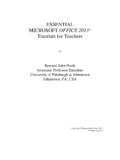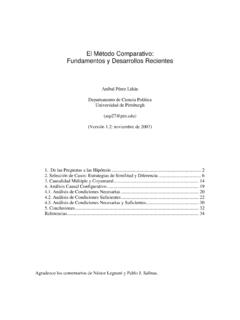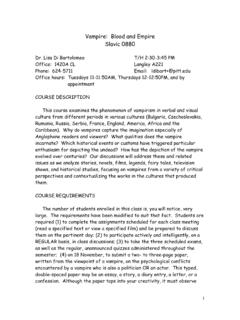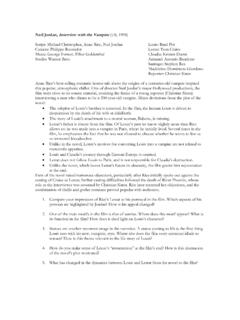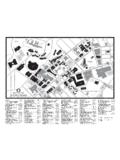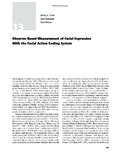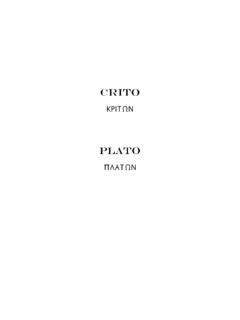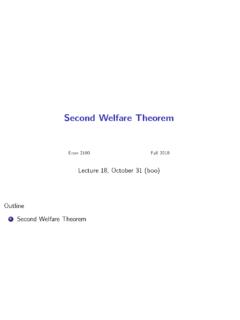Transcription of IS-95 CDMA
1 1 ISIS--95 (95 (cdmaonecdmaone))David TipperAssociate ProfessorAssociate ProfessorGraduate Telecommunications and Networking Program University of PittsburghSlides 9 ~ ~ 27202IS-95 CDMA IS-95 (cdmaone) 2G digital cellular standard Motivation Intended as a new system (greenfield) or replacement for AMPS (not an upgrade) Increase system capacity Add new features/services History: 1990 Qualcomm proposed a code division multiple access (CDMA) digital cellular system claimed to increase capacity by factor 20 or more Started debate about how CDMA should be implemented and the advantages vs.
2 TDMA (religious tones to debate) 1992 TIA started study of spread spectrum cellular2 TELCOM 27203IS-95 CDMA (cont) Several alternative CDMA proposals floated large debate in the CTIA came down to Interdigital vs. Qualcomm Qualcomm proposal won 1993 TIA IS-95 code division multiple access (CDMA) standards completed 1995 IS-95A enhanced revision ANSI J-STD-008 (IS-95b) is standard upbanded to 1900 MHz PCS band 1996 Commercial deployment in US (Sprint PCS) Most popular system in and Korea 1997 IS-95 name changed to cdmaone IS-95 evolves to cdma 2000 in and 3 GTELCOM 27204IS-95 System Features Digital Voice QCELP fixed rate coder variable rate QCELP coder.
3 , , , Kbps Use of voice activation to reduce interference As data rate reduces, the transmitter can reduce the power to achieve the same error rates Dual Mode (AMPS/CDMA), Dual Band (900, 1900 MHz bands) Low power handsets (sleep mode supported) Soft Handoff possible Digital Data services (text, fax, circuit switched data) Advanced Telephony Features (call waiting, voice mail, etc.) Security: CDMA signal + CAVE encryption Air Interface StandardOnly3 TELCOM 27205IS-95 System Features Code Division Multiple Access/FDMA/FDD Traffic Channel Pair of MHz radio channels (up/downlink) Several users share a radio channel separated by a code not a timeslot or frequency!
4 Receiver performs a time correlation operation to detect only desired codeword All other codewords appear as noise due to decorrelation Receiver needs to know only codeword and frequency used by transmitter Adjust power often to prevent near far problem universal frequency reuse (frequency reuse cluster size K =1) Simple planning large capacity increase TELCOM 27206 CBDFGEACBDFGEACBDFGEAU niversal Frequency ReuseUniversal Frequency ReuseAAAAAAAAAAAAAAAAAAAAAF requencyReuse Factor = 7 for AMPSF requencyReuse Factor = 7 for AMPSCCBBDDEEAAFFGGCDMA UniversalFrequency ReuseCDMA UniversalFrequency ReuseFrequency Reuse Factor = 4 or 3 for GSM systems4 TELCOM 272016IS-95 CDMA - Radio Aspects IS-95 is an air interface standard only System use FDD/FDMA/CDMA FDD => Uplink and Downlink channels separated according to Cellular band or PCS band regulatory requirements FDMA breaks up licensed
5 Spectrum into MHz channels CDMA multiple users share a MHz channel by using orthogonal spreading codes (Walsh codes) IS-95a standard designed for AMPS cellular band Each cellular provider is allocated 25 MHz spectrum => ten CDMA duplex channels if A AMPS Band provider, 9 if B band providerTELCOM 272017 Physical channels A CDMA system has MHz wideband carriers Carrier bandwidth in AMPS is 30 kHz Carrier bandwidth in GSM is 200 kHz Carrier bandwidth in IS-95 is MHz with guard band One CDMA carrier can contain 41 AMPS channels of spectrum In Cellular Band IS-95 carrier frequencies are denoted in terms of the AMPS channel numbers283303 304312 263253 25441 AMPS channels 5 TELCOM 272018 Interference between CDMA and AMPS/TDMA systems The recommended guard band between the CDMA carrier band edge and an AMPS or TDMA carrier is 270
6 KHz => 9 AMPS channels of 30 kHz To set up one CDMA channel, 59 AMPS channels have to be cleared ( MHz) To set up two CDMA channels, only 100 AMPS channels have to be cleared (3 MHz)283303 304312 263253 25441 AMPS channels 9 guard channels 9 guard channels TELCOM 272019IS-95 Radio AscpectsWith 20 ms spanInterleavingConvolutional codingConstraint length = 9 Viterbi MHz -> MHz with guard bandFiltered kbpsNominal data rate (Rate Set 1) McpsChannel/Chip rateQuadrature phase shift keying or variationsModulation6 TELCOM 272020IS-95 Radio Aspects IS-95 uses several techniques adapted from military Direct Sequence Spread Spectrum (DSSS) Narrowband signal is multiplied by very large bandwidth signal (spreading signal)
7 Spreading signal is pseudonoise code sequence with chip rate much greater than data rate of message DSSS provides resistance to narrowband interference, inter-symbol interference and low power operation Code Division Multiple Access All users, each with own codeword approximately orthogonal to all other codewords, can transmit simultaneously with same carrier frequency Receiver performs a time correlation operation to detect only desired codeword Rake Receiver Multiple parallel receivers used to combat multi-path interference and inter-symbol interferenceTELCOM 272022IS-95 Multipath Combining Multipath: reflection, diffraction, and dispersion of the signal energy caused by natural obstacles such as buildings or hills, or multiple copies of signals sent intentionally ( , soft handoff) Rake receiver used to combine different path components.
8 Each path is despread separately by fingers of the Rake receiver and then combined Possible due to low auto-correlation of spreading code7 TELCOM 272023 RadioDemodulatorCorrelatorCorrelatorCorr elatorbinarydecisionDigital carrierDigital carrierDigital carrierReceivedsignalRadio-frequencycarr ierRAKE receiverRake Receiver RAKE receiver combines the multipath signals constructivelyTELCOM 272024 Multipath and the RAKE Receiver 8 TELCOM 272025 Processing of multipaths using the Rake ReceiverxIntegrate anddump (Tb)Hold untilTb+pN TbxIntegrate anddump (Tb)Hold untilTb+pN xIntegrate anddump (Tb)Hold untilTb+pN xIntegrate anddump (Tb).
9 2 +bT3 +bT)(1tc)(21 tc)(31 tcNpbT +)(1 Nptc 1 Path 2 Path NpDecideTELCOM 272028 Codes used in IS-95 systems Walsh codes They are the orthogonal codes used to create logical channels on the up/downlink (at the same time and within the same frequency band) PN (pseudo-noise) codes They are used to distinguish between transmissions from different cells and are generated using linear feedback shift registers Basically a pseudo-random number generator They have excellent autocorrelation properties Two short PN codes and a long PN code are used in IS-95 that have periods of 215 1 and 242 1 Convolutional codes for error correction Block codes with interleaving and error correction9 TELCOM 272029 Delay applied to random number sequence at a base station9 Pseudo-noise code offset PN_OFFSETL ocation Area defined by operating company12 Registration
10 ZoneReg_ZoneService providers ID 16 Network identifierNIDA ssigned by regulators to a geographical service area15 System identifierSIDA ssigned by manufacturer to a mobile station32 Electronic serial numberESND irectory number assigned by operating company to a subscriber34 Mobile IdentifierMIND escriptionSize (bits)NameNotationSample IS-95 System IdentifiersTELCOM 272030IS-95 Logical Channels CDMA systems define multiple channels per frequency channel Pilot channel Provides a reference to all signals (beacon) Sync channel Used for obtaining timing information Paging channel Used to page the mobile terminal when there is an incoming call Traffic channel Carries actual voice or data traffic.
